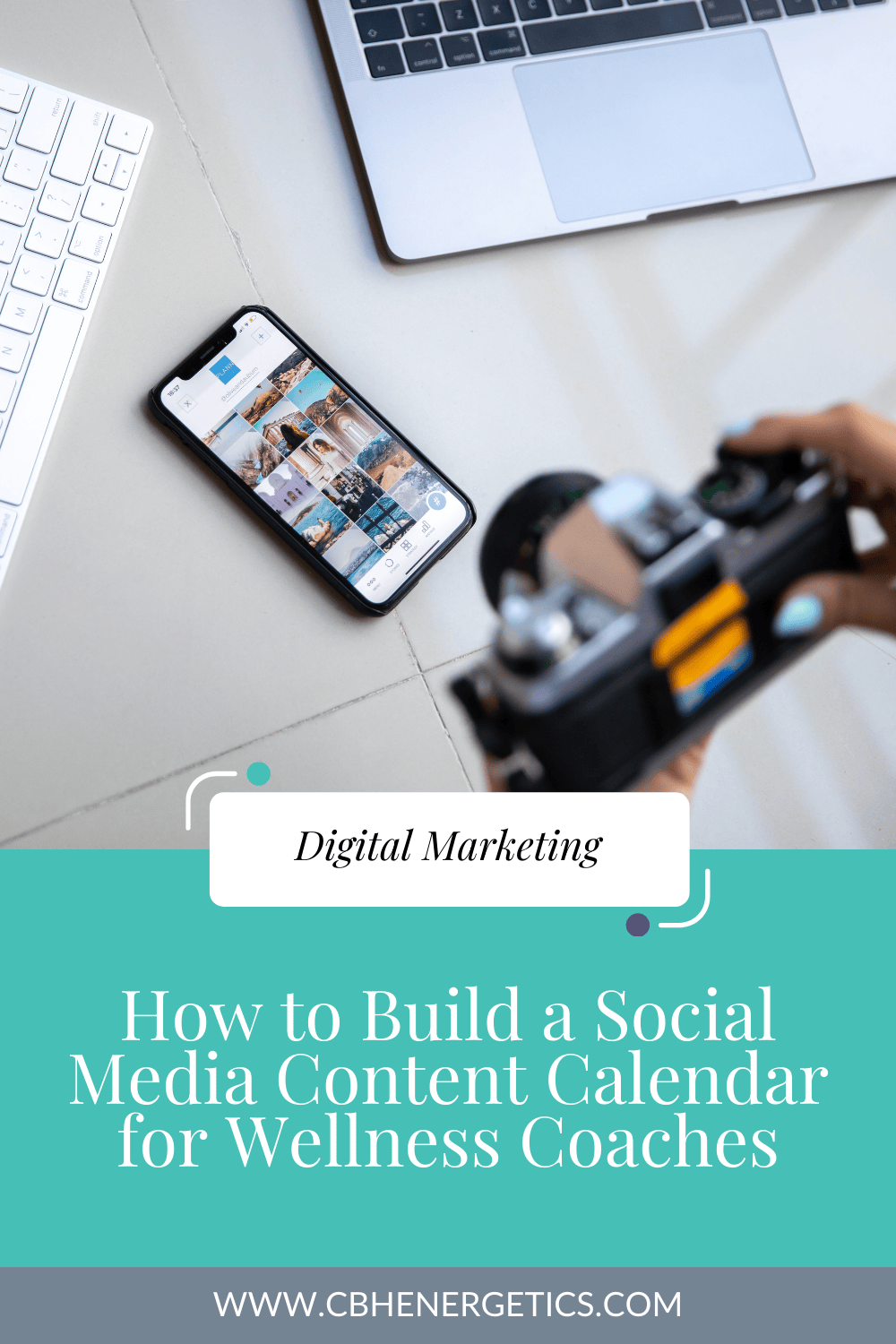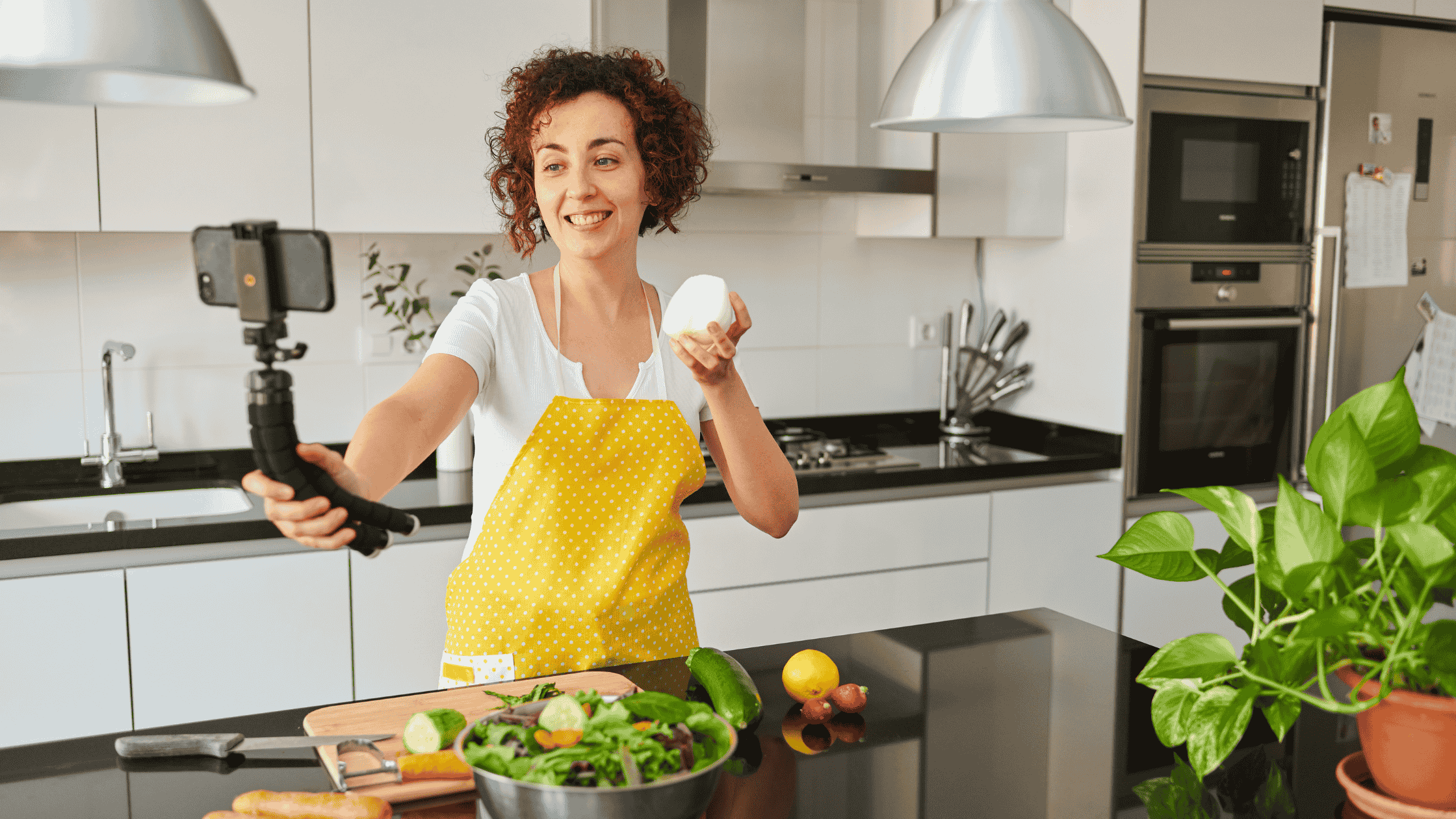
In the vast digital world, there is immense pressure to be on every social channel, right? From memes to TikTok trends, engagement to growth, social media can feel like an uphill battle, climbing ever onward for that one viral post.
The fact is that consistency, engagement, and good content are all key to growing your online presence and building a relationship with your audience. But, if you’re like many self-employed business owners with a staff of one (YOU), keeping up with daily posts, ideas, and schedules can quickly become overwhelming. A planned social media content calendar comes in pretty handy, and in this blog, we’re sharing some tips on how we use a content calendar at CBH Energetics.
A well-organized content calendar helps you plan your posts, stay consistent, and ensure your content aligns with your business goals. Let’s get you started!

Before you start filling in your calendar, defining your goals is important. What do you want to achieve with your social media efforts? Here are 10 goals social media can help you reach:
Build brand awareness
Showcase your expertise
Increase traffic to your website
Grow an engaged audience
Nurture relationships with clients (current & future)
Generate leads through email opt-ins
Promote your services and offers
Market affiliate products you trust
Convert followers into paying clients
Gather insights to refine your coaching programs
By defining your goals, you can create content that directly supports them, whether posting client testimonials, educational content, product benefits, behind-the-scenes videos, or special offers. Remember your goals throughout the process to ensure every post is purposeful.

Not all social media platforms are created equal. Each one has its pros and cons! Knowing where your audience spends their time and focusing your efforts on those platforms is essential. You should also enjoy creating quality content and marketing on your chosen platform. That energy shines through when you are having fun and feeling aligned with your platform and audience.
Here are a few considerations:
Pros:
Visual Appeal: Instagram is highly visual, perfect for wellness practitioners to share inspiring images, recipes, products, case studies, and short videos. It can showcase products or services in an engaging way.
Engagement: Features like stories, reels, polls, links, threads, all help you connect with followers in real-time or through bite-sized content.
Discoverability: Hashtags, tagging, collaborations, and location tags make it easier for new users to find your content.
Brand Building: Allows you to create a strong personal brand through curated content. The professional dashboard (as of 2025) has inspiration and trending audio tabs to inspire timely and catchy ideas!
Cons:
Algorithm Changes: Instagram’s algorithm can sometimes limit your organic reach unless you actively engage with followers or use paid ads.
Time-Consuming: Consistent posting and interaction with followers are necessary to maintain visibility.
Short Content Limitations: While reels and stories are great for quick updates, they might not allow for deep, in-depth content.
Pros:
Community Building: Facebook Groups are still an excellent way to create a loyal community for niche-specific discussions.
Business Features: Facebook Ads are highly targeted and can be an excellent way to boost visibility for your business.
Longer Form Content: Facebook allows more detailed posts than some other platforms.
Cons:
Declining Organic Reach: Due to the algorithm, organic reach has declined significantly over the years, so you might need to rely on ads to get noticed.
Demographic Shift: Younger audiences are leaving Facebook in favor of other platforms, such as TikTok and Lemon8.
Less Visual Focus: Compared to Instagram or Pinterest, Facebook isn’t as visually driven, which may not suit wellness practitioners who focus on aesthetics. Carousels do not translate well to Facebook when cross-posting.
Pros:
Professional Networking: LinkedIn is ideal for building connections with other professionals in the wellness or related industries.
Authority Building: Great for thought leadership content, positioning yourself as an expert in your niche. Share insightful content and publish LinkedIn articles that rank in search.
B2B Marketing: LinkedIn can be a valuable platform if you provide services to other businesses (e.g., wellness coaching for companies).
Cons:
Limited Content Formats: LinkedIn supports long-form posts and articles, but has fewer diverse content options than Instagram or YouTube.
Slower Growth: Building an audience on this platform can be slower than on casual platforms like Instagram or TikTok.
Less Interactive: The engagement here can sometimes feel more formal and less personal than Facebook or Instagram. The key to success on any platform is engagement. Sharing thought-provoking content to spark discussion is one engagement tactic that leads to success on LinkedIn.
Pros:
Search Engine Integration: Pinterest works as a visual search engine, meaning your content can have a long shelf life and continue driving traffic for months or years.
Highly Visual: Ideal for wellness practitioners to share infographics, recipes, blog posts, and wellness tips with high visual appeal.
Content Longevity: Pins have a longer shelf life than posts on other platforms, driving traffic even after they’re initially posted.
Cons:
Traffic-Heavy: Pinterest is great for driving traffic to your website, but doesn’t have the same level of direct social engagement (likes, comments, etc.) as other platforms.
Not as Interactive: It’s more of a discovery and bookmarking platform than a social networking site, so engagement with followers is limited.
Learning Curve: The platform’s algorithm can be tricky to navigate, and it may take time to optimize your pins effectively. Multiple pin images are needed to keep content fresh.
Pros:
Long-Form Content: Great for producing detailed, value-driven content like tutorials, interviews, or podcasts.
SEO-Friendly: YouTube videos are indexed by Google, so your content has excellent search visibility.
Monetization: You can monetize content on YouTube through ads, memberships, or affiliate links. This makes it an excellent place to showcase client results or health-related content related to affiliate products.
Evergreen Content: Once uploaded, YouTube videos continue to be discoverable, allowing you to reach new audiences continuously.
Cons:
High Production Demands: Creating quality video content can be time-consuming and requires investment in equipment and editing.
Competition: There’s a lot of content on YouTube, and it can be challenging to stand out, especially in a popular space like wellness.
Consistency Needed: Like Instagram, you'll need to post consistently and stay on top of trends to build a following.
Once you’ve chosen your platform(s), tailor your content to each platform’s strengths. For example, Instagram might be great for quick wellness tips, while LinkedIn could be the place for longer, more professional articles.

Create content themes to keep your social media strategy organized and aligned with your business goals. These broad categories or topics guide the type of posts you’ll share each week.
Here are a few content theme ideas for wellness coaches:
Client Success Stories: Share testimonials or before-and-after results highlighting the benefits of your coaching services.
Educational Content: Post tips on healthy living, nutrition, exercise, stress management, or mental well-being.
Behind-the-Scenes: Give followers a peek into your day-to-day life, wellness routine, or the tools you use, like bioenergetics testing.
Motivational Quotes: Inspire your audience with uplifting messages to stay healthy and positive.
Product/Service Promotions: Share offers for your services or products like health tests, coaching packages, or affiliate products you recommend.
Interactive Content: Host polls, quizzes, or Q&A sessions to engage followers and encourage interaction.
A balanced mix of these content themes will keep your audience engaged and showcase your expertise across different areas.
Once you have your themes, it's time to decide how often you'll post. The frequency will depend on your available time, resources, and the platforms you’re using. Here are some general guidelines:
Instagram/Facebook: Aim to post 3-5 times per week. This keeps your content fresh and visible in your audience's feed.
Pinterest: Pin regularly, at least 5-10 pins daily, to stay active and relevant.
YouTube: Weekly content, same day, is the optimal consistency for YouTube.
LinkedIn: 2-3 posts per week is often sufficient, especially if your posts are longer and more in-depth.
Consistency is more important than frequency, so don’t stress about posting every single day. The goal is to show up regularly without burning out. Choose a posting frequency that feels sustainable.
Now that you know what you want to post and how often, it’s time to organize it in a calendar. Here are some tools to make scheduling easy:
Google Calendar: Simple and easy to use. You can color-code your posts by theme and set reminders.
Trello or Notion: Project management tools that organize your posts into different boards. You can track upcoming posts, ideas, and deadlines.
Hootsuite, Planoly, Social Bee, or Buffer: Social media scheduling tools allow you to plan and schedule posts in advance. These tools also provide analytics to track how your posts are performing.
Canva: While primarily a design tool, Canva also allows you to plan and design your posts in advance. It's excellent for creating branded graphics to accompany your content.
With these tools, you can plan your content days or even weeks in advance, leaving you more time to focus on engaging with your audience rather than scrambling to post at the last minute.

Don’t just schedule posts and forget about them!
Social media is about building relationships, so take time to interact with your followers. Respond to comments, answer DMs, and engage with others in your niche by liking, commenting, or sharing their posts.
Engagement helps you build trust and authority, which is crucial for converting followers into clients. It also keeps you visible on the platform, as many algorithms favor accounts that actively interact with their audiences.
Finally, don’t forget to track the performance of your posts. Most social media platforms provide insights showing how your posts perform regarding reach, engagement, and conversions.
Pay attention to the types of posts that get the most engagement and adjust your content strategy accordingly. For example, if your audience loves your educational content, consider sharing more tips and advice. If they engage more with your personal stories, try to incorporate more of that.
A social media content calendar is a game-changer for wellness coaches. It helps you stay organized, save time, and consistently provide value to your audience. By defining your goals, choosing the right platforms, planning your content themes, and engaging with your followers, you’ll build a social media presence that attracts the right clients and grows your wellness business.
Ready to get started? Begin by mapping out your next month’s content and try using one of the tools mentioned to keep everything organized. With a bit of planning and consistency, you’ll be well on your way to building a stronger, more engaged community online.







